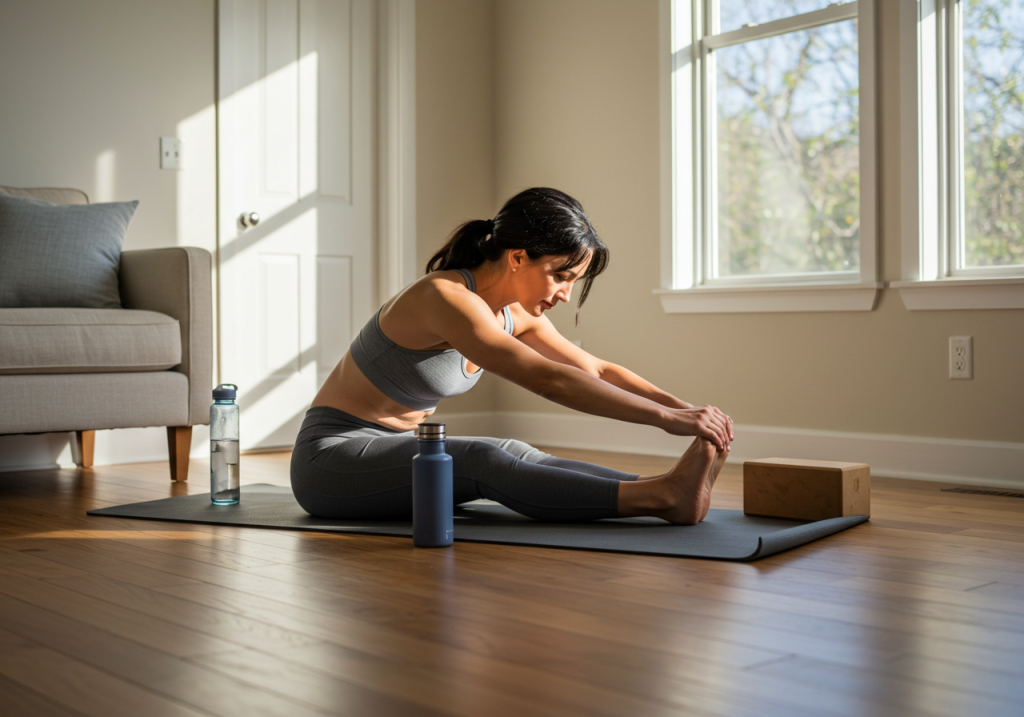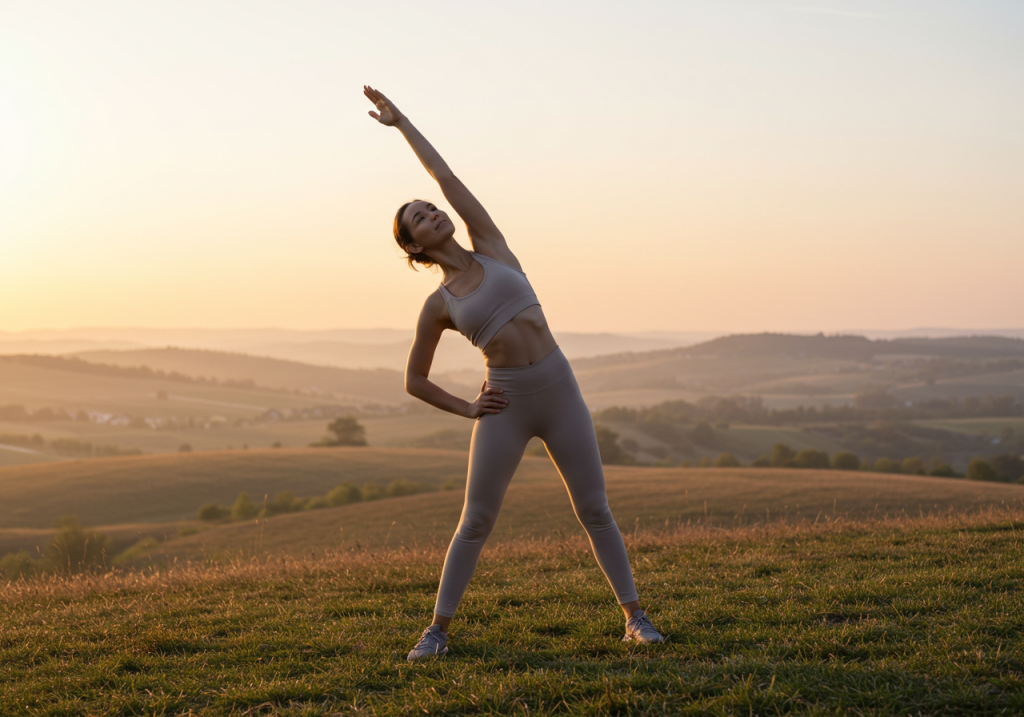What Are the Benefits of Active Recovery?

When you think about recovering after a tough workout, what comes to mind? Maybe it’s sprawling out on the couch with a bag of chips or sinking into a hot bath. While those can feel amazing, there’s another option that’s been gaining traction among fitness enthusiasts: active recovery. So, what are the benefits of active recovery? For starters, it’s like giving your body a gentle hug—it boosts blood circulation in a way that’s similar to watering a parched garden. When you opt for light movement, like a relaxed walk, a soothing yoga flow, or a casual bike ride, you’re delivering a fresh supply of oxygen and nutrients straight to your tired muscles. This is a game-changer after an intense sweat session because it helps sweep away lactic acid—the stuff that makes you feel stiff and sore. Imagine waking up the next day with legs that don’t groan at every step. Doesn’t that sound worth it?
But it’s not just about your muscles. Active recovery also keeps your mind in the game. Instead of zoning out in front of the TV, you’re staying engaged with your body through gentle activity. It’s the perfect mix of effort and ease—like sipping a warm cup of tea on a chilly day. You’re unwinding, sure, but you’re also keeping the wheels turning. This balance can leave you feeling refreshed instead of sluggish, which is a huge perk for anyone who’s ever felt stuck in a post-workout rut. So, what are the benefits of active recovery? It’s this sweet spot between play and rest that keeps you moving forward without burning out.

And let’s not overlook energy. Yes, you read that right—light exercise can actually recharge you! When you choose active recovery over total couch-potato mode, you’re giving your body a little boost instead of letting exhaustion take the wheel. Picture it like plugging in your phone when it’s at 20% battery—a short charge can go a long way. Those days when you’re dragging your feet? A brisk walk or some gentle stretching can flip the script, turning fatigue into a surprising burst of productivity. It’s a small shift with big rewards.
Unlocking Recovery: The Surprising Benefits of Active Rest for Athletes
Athletes, listen up: recovery doesn’t always mean doing nothing. Too many of us fall into the trap of thinking total rest is the golden ticket after a grueling workout. But here’s the twist—what are the benefits of active recovery for those who push their limits? Light activities like jogging at a snail’s pace, pedaling leisurely on a bike, or flowing through a yoga sequence can work wonders. It’s not about going hard; it’s about keeping the engine running without redlining it. Think of it like swaying to your favorite song in the kitchen instead of collapsing on the sofa—both give you a breather, but one keeps your energy alive.
There’s an old saying: “Motion is lotion.” And when it comes to recovery, it’s spot-on. Moving lightly helps flush out that pesky lactic acid buildup from your last tough session, easing soreness and keeping your muscles supple. But the benefits don’t stop there. What are the benefits of active recovery for your mood? When you get moving, your body pumps out endorphins—those natural feel-good chemicals that can turn a grumpy day around. Picture this: you’re strolling through the park, the sun’s out, and suddenly you’re smiling for no reason. That’s the magic of active recovery at work. It’s not just about physical relief; it’s a mood-lifter too. Who wouldn’t want a double dose of goodness like that?
For athletes, this approach can also prevent that stiff, creaky feeling that creeps in after a hard day. By keeping your blood flowing, you’re delivering nutrients where they’re needed most—like a delivery service for your muscles. It’s a simple tweak to your routine that can make a world of difference, helping you bounce back faster and feel stronger for your next challenge.

From Fatigue to Fitness: How Active Recovery Can Transform Your Training
So, what exactly does active recovery look like? It’s not about powering through another HIIT session—it’s gentler than that. Imagine taking a leisurely stroll through your neighborhood, easing into some light yoga poses, or hopping on your bike for a slow spin. What are the benefits of active recovery here? It’s all about promoting blood flow, kind of like squeezing fresh lemon juice over a crisp salad—it keeps everything vibrant and prevents stagnation. When you weave this into your training, you’re speeding up nutrient delivery to your muscles. Those achy quads and tight hamstrings? They’ll start singing your praises sooner than you think.
But it’s not just a physical win—active recovery has a mental edge too. Ever notice that post-workout funk that sneaks up sometimes? Maybe you’re too wiped out to enjoy the rest of your day, or motivation starts to slip. Light movement can flip that switch. What are the benefits of active recovery for your mindset? It keeps your spirits high and your drive intact. When you stay in motion, even at a relaxed pace, you’re building a positive cycle—less fatigue, more focus, and a renewed sense of purpose. It’s like tending to a plant: a little care goes a long way, and soon it’s thriving again.
This approach also helps you tune into your body. You’ll start noticing what feels good and what needs a little extra TLC. Over time, that awareness can transform your training, making it more intuitive and effective. Active recovery isn’t just a break—it’s a bridge from exhaustion to energy, setting you up for long-term success.

Why Lighter Days Matter: Exploring the Science Behind Active Recovery
Think of your body as a smartphone after a long day of scrolling, gaming, and texting—it’s begging for a recharge. Traditional recovery might mean kicking back with a Netflix marathon, but active recovery throws a curveball into the mix. What are the benefits of active recovery on these lighter days? Picture yourself doing low-key workouts like walking, stretching, or yoga. Science backs this up: gentle movement boosts blood flow, which helps shuttle oxygen and nutrients to your muscles faster. And here’s a bonus—stepping outside for some sunlight can supercharge the process. Sunlight ramps up serotonin, that happy hormone that lifts your mood and sharpens your focus. It’s like premium fuel for your recovery tank.
Spending time outdoors also means more fresh air, which is a natural remedy for sore muscles. The extra oxygen helps dial down inflammation and stiffness, leaving you feeling looser and lighter. Studies even show that pairing light exercise with daylight sparks a surge of endorphins—those tiny bursts of joy that make you feel unstoppable. What are the benefits of active recovery in this combo? It’s like a one-two punch of physical relief and mental clarity. Ever felt that rush after a sunny jog or a peaceful walk? That’s your body saying, “Thanks for the upgrade!”
Lighter days aren’t just a luxury—they’re a necessity. They give your body a chance to reset without grinding to a halt. By embracing active recovery, you’re not only healing faster but also setting the stage for better performance down the road. It’s a small investment with a massive payoff.

Move to Recover: The Top Benefits of Incorporating Active Recovery into Your Routine
So, why should you make active recovery a regular part of your fitness game plan? For one, it revs up blood flow like a strong cup of coffee on a sleepy Monday morning. That increased circulation delivers oxygen and nutrients straight to your muscles, speeding up healing and kicking soreness to the curb. What are the benefits of active recovery for your body? It’s like giving your system a friendly nudge—stiffness fades, and you’re back in action faster than you’d expect.
But it’s not just about the physical perks. Active recovery keeps your mind sharp too. High-intensity workouts can leave you feeling like you’ve been hit by a truck, but light movement offers a breather without killing your momentum. Think of it as a refreshing intermission between acts—it clears the fog and keeps you dialed into your goals. What are the benefits of active recovery for mental focus? You stay in tune with your body, learning its cues and rhythms. Maybe you realize your shoulders need more love, or your hips crave a good stretch. That self-awareness builds a stronger, smarter approach to fitness.

Plus, it’s fun! Active recovery doesn’t have to be a chore—you can mix it up with a dance session, a swim, or even a playful game of tag with your kids. It’s a chance to enjoy movement without the pressure of pushing your limits. By weaving it into your routine, you’re not just recovering—you’re rediscovering what keeps you moving in the first place. So, what are the benefits of active recovery? It’s a total win: faster healing, sharper focus, and a happier you.
If you enjoyed this guide on “What Are the Benefits of Active Recovery?”, be sure to swing by www.soulfullwoman.com for more articles packed with tips to fuel your fitness journey and empower your wellness goals!




